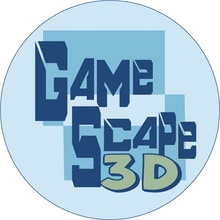I take it you have all heard about Luban? Yes, that program where you can make your models into multiple parts. Well, it’s now going a lot further by adding a lot more features! So, here we will be talking about LuBan features! The new ones and old, so what are we waiting for? Let’s do it!
First of all lets tell you what this software is about:
- LuBan is next-generation, generative CAD/CAM software discovered at Massachusetts Institute of Technology (MIT) and developed at Singapore University of Technology and Design (SUTD) to help designers and makers improve physical production of their creations.
- LuBan automatically generates 3D models in the form of (1) stacking, (2) interlocking, (3) finger joint, and (4) 3D printed models. Parts of a model can be fabricated by laser cutting and 3D printing. The Software is not dependent on specific fabrication methods; instead, it can interface with many types of machines through several standard file formats such as DXF, EPS, OBJ, STL, and SVG.
LuBan Natural Cut
Objective:
When a big object is assembled from a few smaller parts, the cut lines are often prominent. LuBan’s Natural Cut feature aims to cut a big object by following its shape. This makes it so that the cut lines are less prominent.
Algorithm:
- A natural cut requires a planar cut as its base position. The software searches the vicinity of the planar cut for a curved cross-section to optimize the cut shape.
Implementation:
Just like the planar cut, the natural cut is available in two functions:
- Automatic cutting using: Mesh -> LuBan
- Manual cutting using: Mesh -> Split -> Natural cut.
When using the second function, you need to input a cutting plane, because a natural cut needs a plane to indicate the rough location of cutting.
Limitations:
- The current version of LuBan works on a solid model, not a hollow model. If a hollow cross-section is detected, the software rolls back to planar cut.
- The current version cannot deal with complicated local shapes. If an error is detected in natural cut, LuBan rolls back to planar cut. So, even though natural cut is applied, you may still get some planar cuts.
LuBan Grid Cut
Implementation:
Mesh -> Split -> Grid cut
This function splits a mesh model into equal-sized blocks. It was requested by John Sanford. I also believe it is a handy function. Luban’s Grid Cut is handy for when you want to cut a map into parts.
LuBan Cylindrical Print Volume
Mesh -> Luban -> Output -> Printer Bed -> Circle
This feature was suggested by Tim Fahlbusch. Users who have cylindrical 3D printers will like it. Manufacturers, such as Daniel van Mourik, who make Delta/Kossel style 3D Printers should love it!
The 3D model used in the examples was designed by Marcelo Lopes Vieira.
Interested in learning more about LuBan check out our LuBan Tutorial
If you want the newest LuBan features, head to LuBan’s website and download the newest version!
Have you ever wanted to try printing nylon? You should check out our article on Taulman3d Bridge Nylon!
Check out our 3D printing software deals to get awesome deals
The post LuBan Features : Have A Look, Try Them Out! appeared first on Inov3D.















